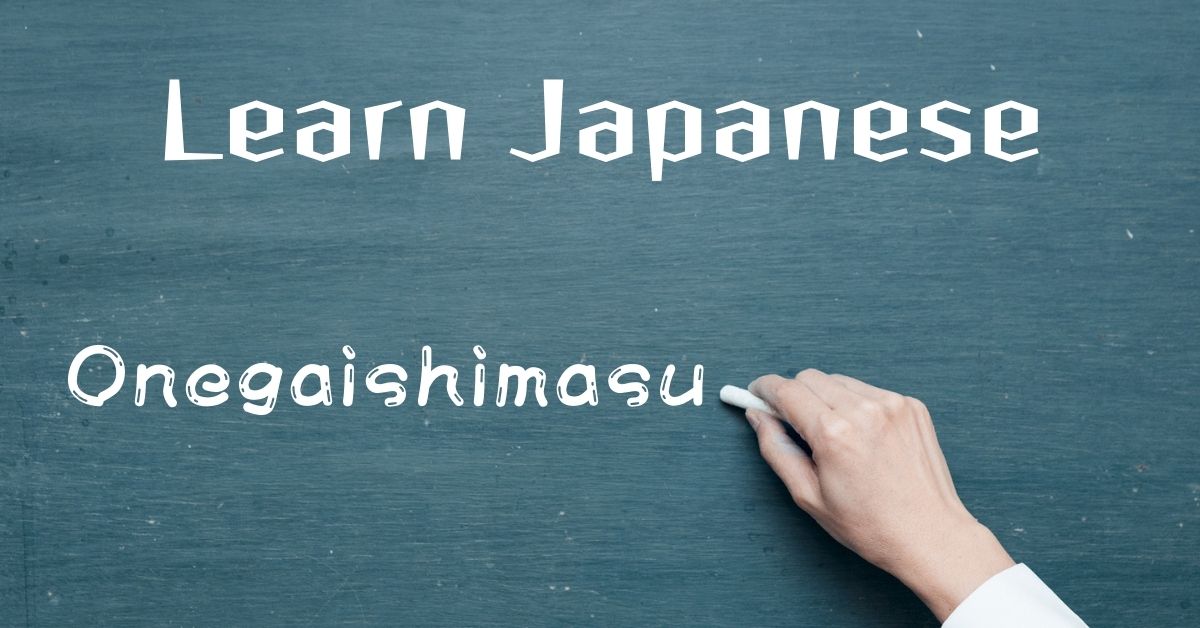Onegaishimasu pronounced oh-neigh-GUY-she-moss, does not directly translate into English. Perhaps that is why many textbooks designed to teach Japanese as a foreign language gloss over it, while others leave it out of the curriculum altogether: how do you explain a word with no English equivalent? Like the majority that which is untranslatable, onegaishimasu is best learned through context.
This article provides some of the most common situations in which it is used, as well as a rough approximation of what it means in those situations.
Used in Self-Introductions
Ex: Watashi wa Tomu desu. Atarashii eigo no sensei desu. Yoroshiku onegaishimasu.
(My name is Tom. I'm the new English teacher. Yoroshiku onegaishimasu.)
“Yoroshiku onegaishimasu” is a phrase commonly used in self-introductions in Japan. It would be the last sentence of your introduction, where “Nice to meet you” usually goes. Its meaning, however, is inherently different than “Nice to meet you.”
Also Read
Yoroshiku onegaishimasu is generally accompanied by a deep bow. This gives you an idea of the formality of the expression, as well as insight into its meaning: used in an introduction, it pertains to the relationship between the one who says it and who it is said to. The person saying it – we’ll say, Tom, as in the example – is humble before the person or people he is saying it to – perhaps his fellow teachers at a school.
In the context of a self-introduction, then, yoroshiku onegaishimasu can be understood roughly as “please take care of me.” It expresses humility and earnestness.
Used to Ask a Favor or Make a Request
Teacher: Koppi shitemoraemasen ka?
Tom: Hai.
Teacher: Jya, onegaishimasu.
(Teacher: Could I ask you to make copies of this?
Tom: Yes, I'll do it.
Teacher: Well then, onegaishimasu.
When onegaishimasu is used to ask a favor or request a service, it is a little easier to understand. In this context, it might be translated as “I’ll leave it to you,” “I leave it in your hands,” or “I’m counting on you.” It is similar to saying please, except that there is a sense of earnest respect between the person who said it and the person he or she said it to.
When making an everyday request, as over the telephone, in a restaurant, or in another service setting, onegaishimasu can simply be translated as “please.”
On the phone, one might say “Rika-san, onegaishimasu,” (Can I speak with Rika, please?), and in a taxi, one might say to the driver, “Shibuya eki made onegaishimasu” (To Shibuya Station, please.)
Used to Start Classes in School and in Presentations
Student: Kiritsu. Ki wo tsuke. Rei.
All students and teachers: Onegaishimasu.
Same student: Chakuseki.
Student: Stand up. Attention. Bow.
All students and teachers: Onegaishimasu.
Same student: Be seated.
The first thing you’ll notice in a Japanese classroom is the way classes begin with a militaristic, rigid uniformity. One student stands and says the commands and all the students stand up together, come to attention, and make a neat bow while saying – you guessed it – “Onegaishimasu.” The teacher bows also and replies in kind. Then, the students sit down in unison, and class begins.
Since starting class this way is a foreign concept to most English-speaking countries, it is a difficult context in which to translate onegaishimasu. It might help to explain what it means by comparing it to a similar exchange between a Japanese speaker and his or her audience.
In Japan, whenever a person is to address an audience, he or she will first bow to the audience and say, “Onegaishimasu.” In most cases, the audience bows back and responds with “Onegaishimasu.”
In these situations, onegaishimasu is best described as an exchange of respect and intention. Each person (or body of people) recognizes the other and, in saying onegaishimasu, not only pledges his or her earnest regard but politely requests that of the other party.
If you are living in Japan and encounter onegaishimasu in other situations, it helps to remember that, regardless of context, this is a polite expression and is almost always used to indicate respect. Using the cues around you will help understand its meaning, even if you can’t put it into words.













